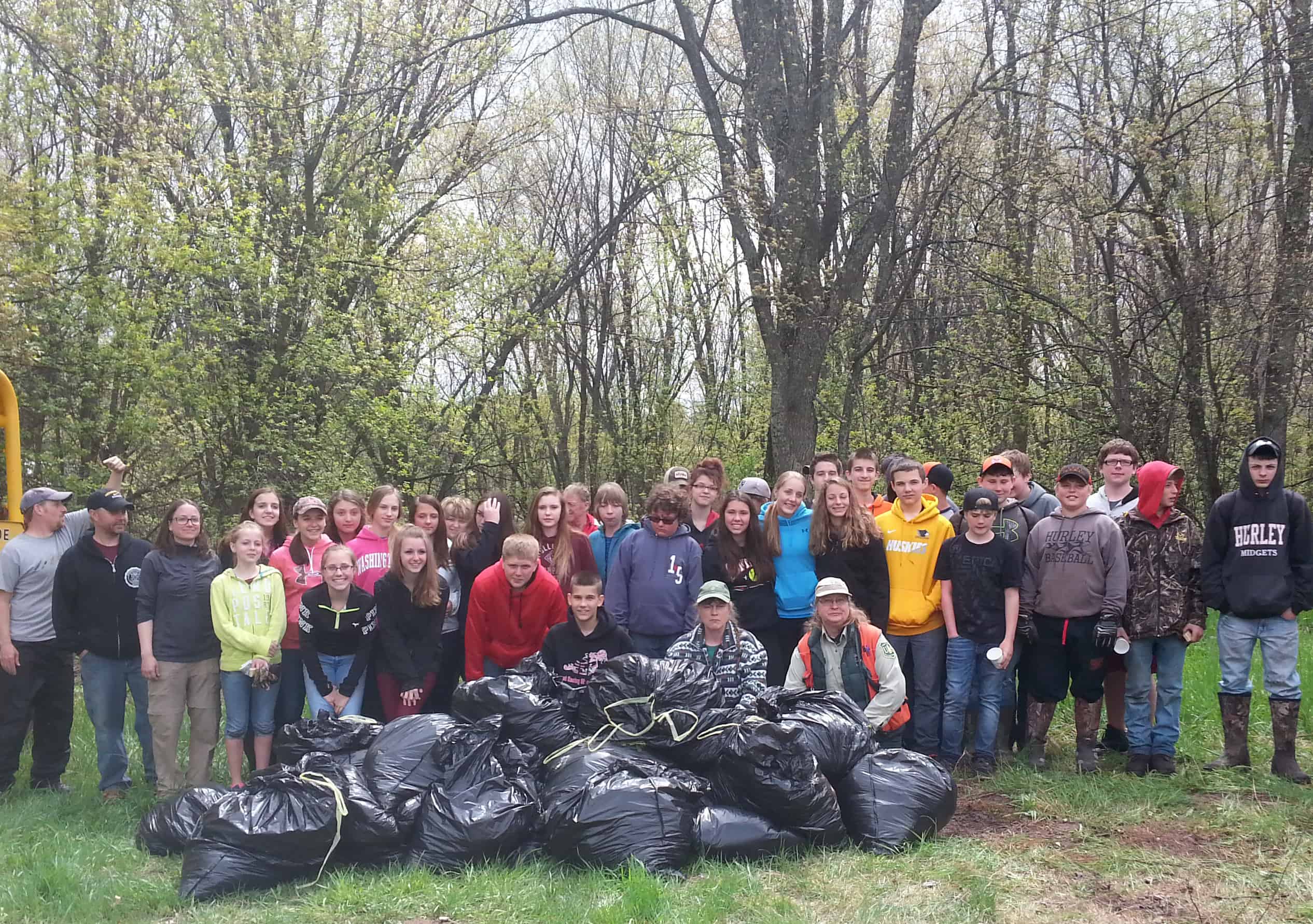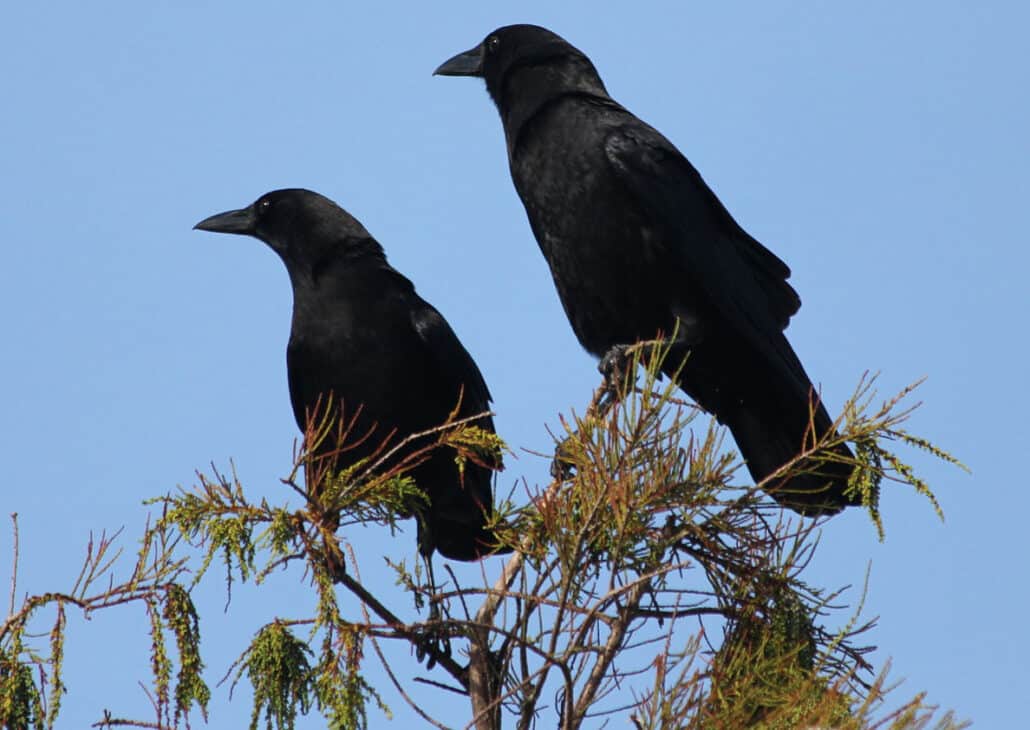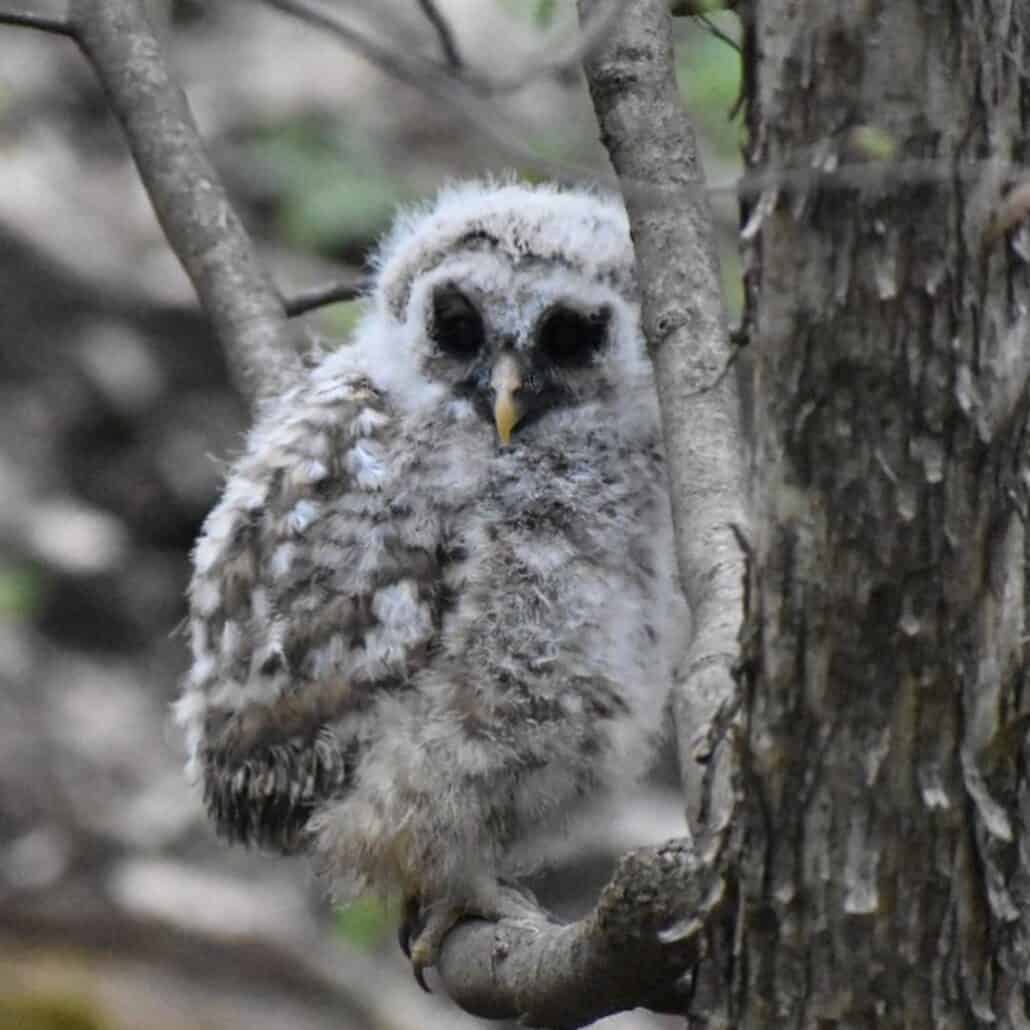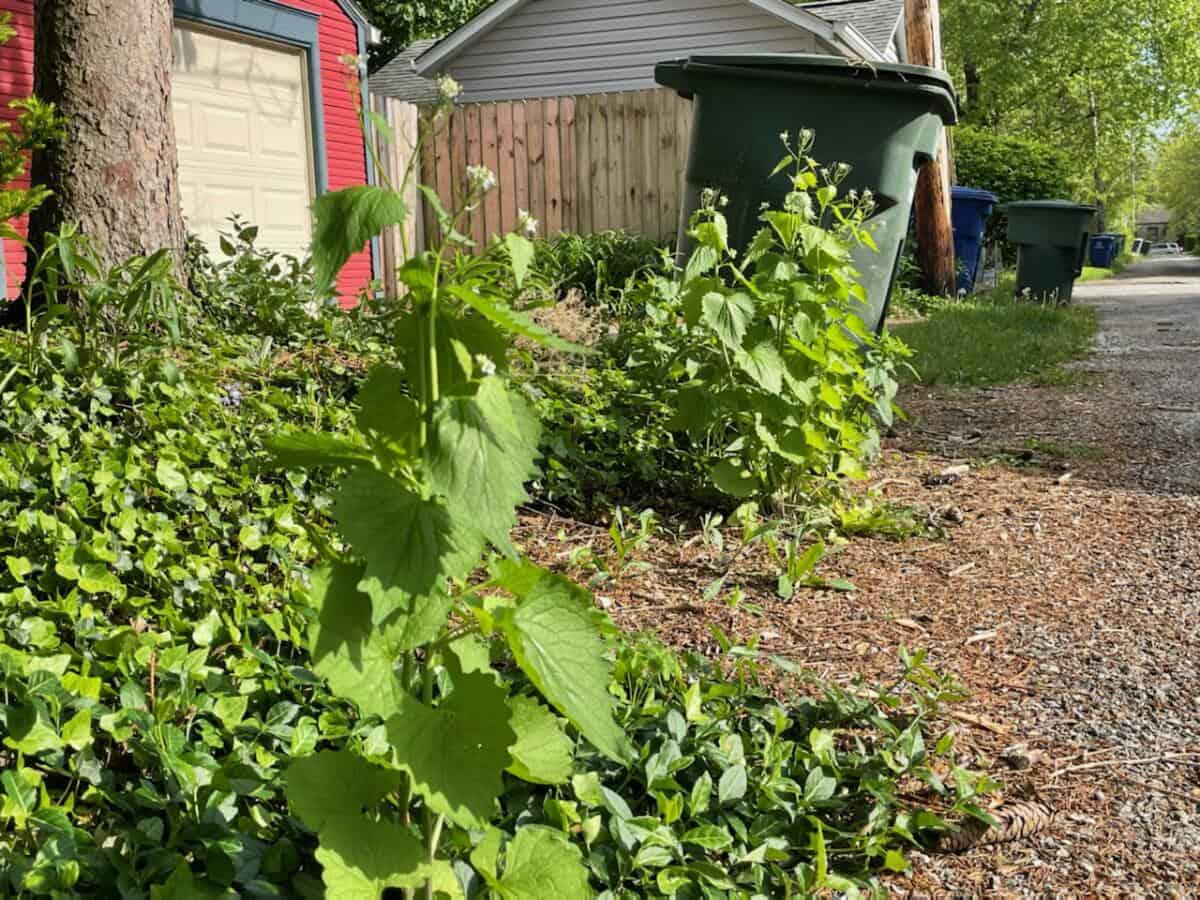
“Garlic mustard is an exotic invasive, and it must be stopped!” Does this sound familiar? Because I hear words to this effect every spring, and due to Spring Bird Brain, I file Pull invasive garlic weed! in the low-priority lobe of said bird brain. But, with my recent efforts to create a more sustainable, bird-friendly yard through gardening, I realize it’s high time I get serious and educate myself about garlic mustard. What follows is a brief primer.
What’s Garlic Mustard, Anyway?

During the 1800s, some well-intentioned European settlers imported this herb and established it for medicinal and food use, as well as a planting to facilitate erosion control. Garlic mustard takes two years to reach maturity and make seeds. A first-year plant is only two to three inches in height, and contains round leaves with scalloped edges. Full-grown garlic mustard stands two to three feet tall. It boasts white flowers with four petals on flowering stems. Its leaves alternate along the stem and are larger near the base of the plant. Each leaf is “toothed” along the edges. (To me, these types of leaves look like they’re been cut out by zig-zag craft scissors.)
A few garlic mustard doppelgängers include fringe cup, money plant, and nipplewort. (Caution: You might want to update your settings to SafeSearch when googling images for nipplewort.) When in doubt about identification, look—er, I mean—sniff for a distinct garlic odor, and look for an S-shaped taproot.
Because it’s self-pollinating, a single garlic mustard plant can populate an entire site. Garlic mustard thrives in partially shaded forested areas, especially floodplains, but will grow in conditions ranging from full sun to sandy forests.
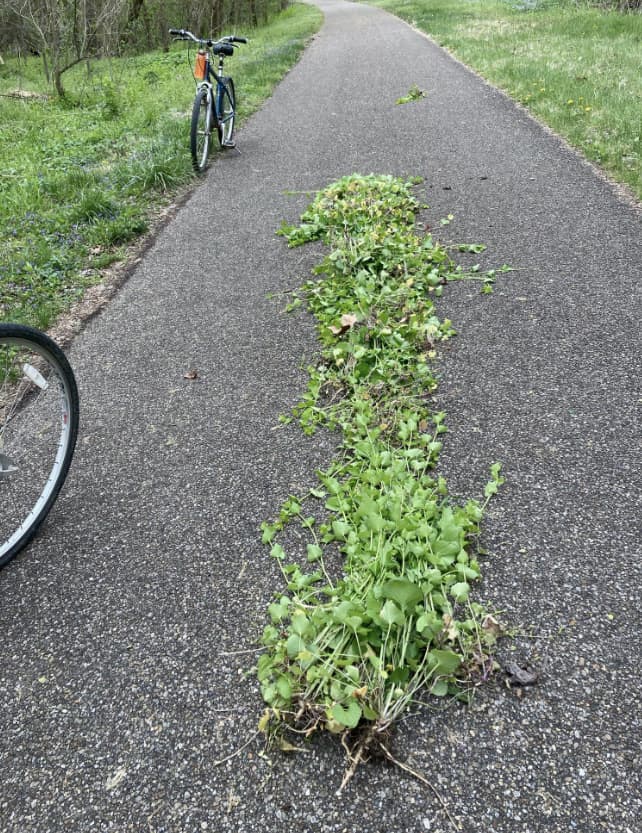
But why should we remove garlic mustard?
#1: Garlic Mustard Lacks Natural Enemies
In its native Europe, more than 60 herbivorous insect species, as well as a number of mammals, are known to eat garlic mustard. However, very few natural enemies exist in North America. In fact, white-tailed deer actively graze around garlic mustard in favor of native plants. Once cleared of native “competitors,” garlic mustard can take an even stronger foothold.
#2: Garlic Mustard Displaces Native Plants
Garlic mustard grows rapidly from late autumn into early spring, which happens to coincide with most native plant’s dormancy. This early maturity deprives native plants of the space, light, and nutrients they depend upon for development. Over time, garlic mustard will completely displace native plant populations such as wild ginger, trillium, spring beauty, and even other native mustard plants. Currently, garlic mustard is one of the most invasive plants in forests throughout the Northeast and Midwest, as well as Canada.
#3: Tree, Insect, and Amphibian Life Cycles Can be Disrupted by Garlic Mustard
When an aggressive invasive plant like garlic mustard interferes with a forest ecosystem’s native plant diversity, the impact can be far-reaching. It suppresses beneficial soil fungi that provide nutrients to native plants and trees. A rare native butterfly, the West Virginia white, lays its eggs on native toothwort. Because this plant so closely resembles garlic mustard, these endangered butterflies can mistakenly lay eggs on garlic mustard. The resultant caterpillars eat the host plant, which is toxic to them. Because garlic mustard’s presence disrupts the understory, it is believed to even impact salamanders and snails, which rely on undisturbed leaf litter and vernal pools, respectively, when laying eggs.
Honestly? I initially planned to include five reasons to pull garlic mustard. But after researching the first three, I was feeling increasingly despondent. Fortunately, we can all contribute to stopping its spread. The best method to eradicate garlic mustard is to pull it in the spring, after a good rain. IMPORTANT! (I wish we had a punctuation mark stronger than the exclamation mark.) Garlic mustard must be bagged and thrown into a garbage can. Do NOT compost it.
In order to appreciate birds and birding, I recognize the need to combat invasive species like garlic mustard to ensure continued biodiversity. Please join me in the fight to eliminate invasive garlic mustard. Be vigilant, and pull, pull, and pull some more. Just be sure to take breaks to look up at the birds.
